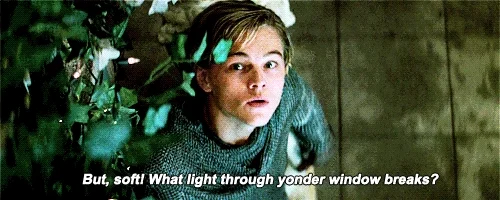How story archetypes could transform your business storytelling
Whether it’s a tale of triumph or transformation, the seven classic narrative archetypes provide a solid framework for impactful content. Wonderthink’s Andrea Warmington shares how to leverage every archetype in your business storytelling.
SIGN UP FOR OUR NEWSLETTER
You’ve probably heard the saying there are no new stories, only new ways of telling them.
To an extent, that’s true. That’s because every story ever follows one of seven story archetypes – heroic quests, rags to riches, tragedy. And that includes the stories you tell about your business – your customers, your team, your company.
So, when people say there are no new stories, what they really mean is there are no new story archetypes. Every story ever follows one of these archetypes.
That every story follows one of seven archetypes doesn’t mean your business doesn’t have unique stories to tell. What it means is that, when you’re telling these stories, you should leverage these archetypes as a framework to tell those unique stories. That’s the secret to business storytelling.
In this article, we’ll explore these seven archetypes and how to use them to craft compelling stories for your business.
But first, a personal tale…
Let’s start with a personal story of mine that shows archetypes in action, while still telling a unique story.
A few years ago, I was trapped in an airless, aircon-less, scorchingly hot airport shuttle bus on the Ibiza airport tarmac. It was horrible. I was sweating profusely and struggling to breathe, and everyone around me was too. But the driver refused to open the doors to let some air in. Passengers were begging him for mercy, but he was immovable.
Then, as the sun rose in the sky and we grew desperate, the passengers around me turned into a veritable mob, threatening to smash the windows open. It was truly that bad. Finally, the driver relented and opened the doors.
This story is unique to me and my fellow passengers. But it’s also a classic example of the ‘overcoming the monster’ archetype (more on that in a bit) – a crowd of desperate passengers rising up against a ‘monster’ that threatened our physical wellbeing.
These archetypes don’t just apply to personal anecdotes and the stories told in books and movies: you can also apply them to your case studies, your articles, your website. And they offer endless possibilities for telling stories about your business in new ways.
Putting the 7 classic archetypes into action
Now, let’s dive into the seven story archetypes that form the foundation of all narratives. We’ll explore how you can leverage each archetype to find and tell all sorts of stories – triumphant, funny, transformative – about your business.
The quest
The quest (or hero’s journey) is one of the most-well known story archetypes. In a quest, the main character seeks to achieve a goal – whether that’s Frodo reaching Mordor or Indiana Jones finding the Holy Grail, while overcoming obstacles along the way.
How could you use the quest archetype in your business storytelling? Here are some ideas:
- Tell the story of how one of your customers achieved their goals using your products or services, highlighting the challenges and breakthroughs they faced along the way.
- Try a mission-driven campaign, where you highlight your company’s vision and the journey you’ve taken to bring that vision to life.
Rebirth
The rebirth story is about transformation – a character who changes their ways and becomes a better person for it. Think, every single one of the main characters onThe Good Place. Importantly, the rebirth story should have a happy ending.
When it comes to your business, a rebirth story might be:
- The tale of your company’s rebrand (hello, Wonderthink 🙋🏽).
- An employee’s unconventional career path.
- A customer who’s transformed their own life – all thanks to you.

Comedy
Humans have been writing comedies since the beginning of (recorded) time, beginning with the Ancient Greek playwright Aristophanes. Comedies are more about subverting expectations than belly laughs. Like the quest, comedic plotlines are about overcoming obstacles – though these obstacles tend to be somewhat absurd problems or mistakes.
Shakespeare’s comedies – A Midsummer’s Night’s Dream, Much Ado About Nothing – are some of the most well-known examples of this archetype, but so are Schitt’s Creek and Legally Blonde.
Think comedy doesn’t apply to business storytelling? Think again:
- Chaotic (but cute) behind the scenes stories of your dog-friendly office.
- Quirky advertising campaigns that are anything but run-of-the-mill.
Tragedy
In tragedy – the polar opposite of comedy – the main character can’t overcome the obstacles to achieving their goals, and loses everything by the end of the story. Again, some of the best examples come from Shakespeare – Romeo & Juliet, Macbeth, Hamlet – but there’s also Titanic, The Great Gatsby, and La La Land.
While tragedy’s probably not something you should spend too much time dwelling on in your business storytelling, it does have its place:
- Talk to broader industry challenges, like the recession or the pandemic, and what your company is doing to address these.
- Share stories of failures or mistakes the company made (the Metaverse, anyone?), and the lessons you learned from them.

Overcoming the monster
It’s all in the name: these stories are about overcoming an evil force. This might be physical (any villian in a James Bond film; climate change) or social (the patriarchy in The Handmaid’s Tale, Regina George in Mean Girls).
Every business faces its own ‘monsters’. In your case that might be:
- A fierce competitor – for example, the story of the death blow Netflix dealt to Blockbuster.
- The story of how your business banded together to overcome significant challenges or crises.
Rags to riches
Rags-to-riches stories (also known as underdog stories) are those where the main character gains something they lack – this could be money, but it could also be power or love or respect – then loses it, and then wins it back again. Pretty Woman, Good Will Hunting, and Harry Potter are all examples of rags-to-riches stories.
In the business world, rags-to-riches stories could include:
- Stories of founders who went from humble beginnings to megastars.
- How a customer went from struggling to success-story.

Voyage and return
The voyage and return tale is one where the main character travels to a strange land, and comes back with newfound knowledge – see Barbie’s journey into the real world, or the Upside Down in Stranger Things.
A few ways you could use this archetype in your business storytelling include:
- Sharing experiences and lessons from exploring new markets.
- Insights gleaned from a ‘voyage’ to an industry event.
Making archetypes work for your business
Story archetypes offer brands a solid framework for telling their unique stories in a way that’s both effective and engaging.
While the narrative structures are timeless, how you apply them is entirely up to you. Whether it’s a grand quest, a rebirth, or overcoming the odds, these archetypes can help you tell the stories that matter most to your business.
Need some help telling your business’s stories? Learn how our brand storytelling services can help you unearth and share your stories with the world.
You may also like
Healthcare content for humans: The case for saying it like it is
Why healthcare content should be helpful and human – not filled with jargon.
READ MOREAI brainstorming: A new approach to ideation
AI brainstorming is a game-changer for idea generation. Learn why leveraging tools like ChatGPT for
READ MORE
